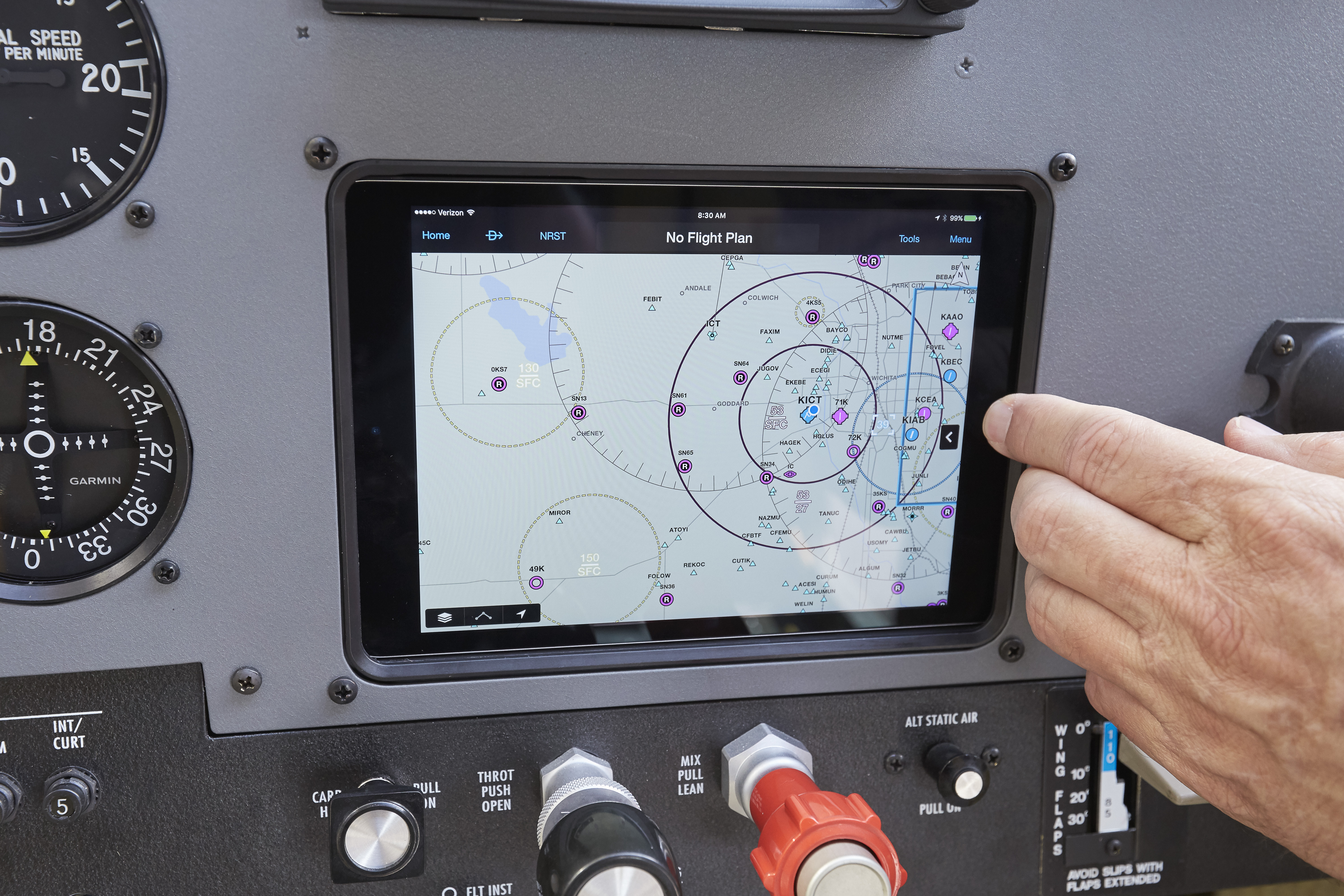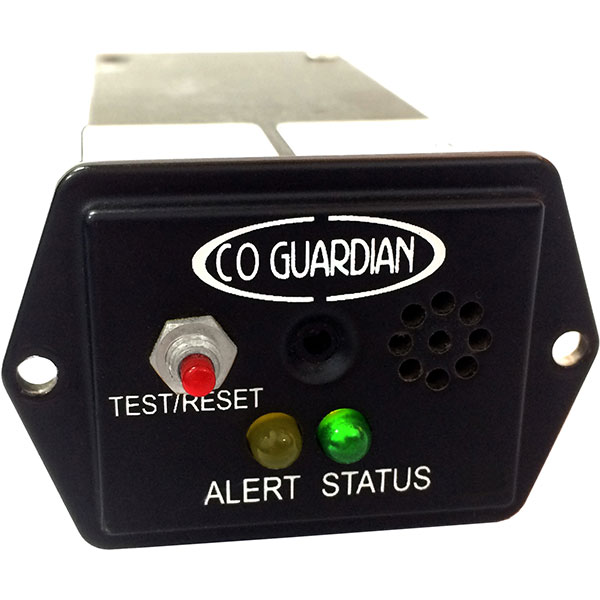Guardian Avionics 353: Top-notch Specifications, Comprehensive Comparisons, And Trusted Buying Sources
Guardian Avionics 353 Information
The Guardian Avionics 353 is a carbon monoxide (CO) detector designed for use in experimental and homebuilt aircraft. It is a compact and lightweight unit that can be easily installed in a small panel space. The 353 has a sensitive CO sensor that alarms when carbon monoxide levels reach 50 parts per million (PPM). It also has an audible alarm and LED indicator lights to warn the pilot of CO exposure.
Introduction
Carbon monoxide is a colorless, odorless gas that can be deadly if inhaled in high concentrations. It is a byproduct of combustion, and can be produced by engines, stoves, furnaces, and other appliances. In an aircraft, CO can be produced by the engine, exhaust system, or other onboard systems.
The Guardian Avionics 353 is an important safety device for pilots and passengers. It can help to protect against the dangers of CO exposure by providing early warning of elevated CO levels. This can give the pilot time to take corrective action, such as landing the aircraft or opening the cabin doors to ventilate the air.
Image
Specifications
| Feature | Specification |
|---|---|
| Dimensions | 3.35" x 2.25" x 1.50" |
| Weight | 3.5 oz |
| Input voltage | 14/28 VDC |
| Operating temperature range | 0°F to 110°F |
| CO detection range | 50 to 1000 PPM |
| Alarms | Audible alarm, LED indicator lights |
| Certifications | FAA TSO C126a, EASA STC CS-23 |
Features
- Sensitive CO sensor with a wide detection range
- Audible alarm and LED indicator lights
- Small and lightweight design for easy installation
- FAA and EASA certified
What's in the box
- Guardian Avionics 353 CO detector
- Test/reset button
- External mounting bracket
- Instruction manual
Conclusion
The Guardian Avionics 353 is a valuable safety device for pilots and passengers. It is a compact, lightweight, and easy-to-install CO detector that can help to protect against the dangers of CO exposure. If you are flying an experimental or homebuilt aircraft, the 353 is a valuable addition to your safety kit.
Additional information
- The Guardian Avionics 353 is also available in a remote mount version (353-201). This version is designed to be mounted behind the panel, and it has a smaller footprint than the panel mount version.
- The Guardian Avionics 353 is FAA and EASA certified, which means that it meets the safety standards of both agencies.
- The Guardian Avionics 353 is backed by a one-year warranty.
I hope this information is helpful. Please let me know if you have any other questions.
Guardian Avionics 353 Compare with Similar Item
a table comparing the Guardian Avionics 353 with two similar products:
| Feature | Guardian Avionics 353 | Aspen Avionics Evolution 1000 | Garmin G500 TXi |
|---|---|---|---|
| Price | $2,995 | $3,995 | $4,995 |
| Display | 5.7" LCD | 7" LCD | 7" LCD |
| Resolution | 800x480 | 1280x800 | 1280x800 |
| Weight | 2.2 lbs | 2.4 lbs | 2.6 lbs |
| Dimensions | 5.7x3.1x1.2" | 7.1x3.8x1.3" | 7.2x3.9x1.3" |
| Features | GPS, terrain awareness, traffic awareness, weather, synthetic vision | GPS, terrain awareness, traffic awareness, weather, synthetic vision | GPS, terrain awareness, traffic awareness, weather, synthetic vision |
| Pros | Affordable, easy to use, reliable | Wide range of features, bright display, long battery life | Wide range of features, bright display, long battery life |
| Cons | Small display, limited features | Expensive, complex to use | Expensive, complex to use |
Overall, the Guardian Avionics 353 is a good value for the price. It is affordable, easy to use, and reliable. However, it has a small display and limited features. The Aspen Avionics Evolution 1000 and Garmin G500 TXi are more expensive, but they offer a wider range of features and a brighter display.
Here is a table summarizing the pros and cons of each product:
| Product | Pros | Cons |
|---|---|---|
| Guardian Avionics 353 | Affordable, easy to use, reliable | Small display, limited features |
| Aspen Avionics Evolution 1000 | Wide range of features, bright display, long battery life | Expensive, complex to use |
| Garmin G500 TXi | Wide range of features, bright display, long battery life | Expensive, complex to use |
Ultimately, the best product for you will depend on your individual needs and budget. If you are looking for an affordable and easy-to-use GPS, the Guardian Avionics 353 is a good option. If you need a more advanced GPS with a wider range of features, the Aspen Avionics Evolution 1000 or Garmin G500 TXi are better choices.
Guardian Avionics 353 Pros/Cons and My Thought
The Guardian Avionics 353 is a carbon monoxide (CO) detector designed for use in general aviation aircraft. It is a small, lightweight unit that can be mounted either on the panel or remotely. The 353 has a number of features that make it a valuable safety tool, including:
- A sensitive sensor that can detect CO levels well below the FAA's 80 parts per million (ppm) threshold
- An audible and visual alarm that warns the pilot of rising CO levels
- A built-in memory that stores the last 200 alarm events
- A simple, easy-to-use interface
The Guardian Avionics 353 has been well-received by pilots, with many positive reviews online. Here are some of the pros and cons of the unit as reported by users:
Pros:
- Sensitive sensor
- Loud and clear alarm
- Built-in memory
- Easy to install
- Affordable
Cons:
- Requires an external annunciator light (for remote-mount units)
- Battery life could be longer
- Not compatible with all aircraft
Overall, the Guardian Avionics 353 is a well-made and reliable CO detector that is a valuable safety tool for general aviation pilots. It is easy to install and use, and the sensitive sensor can detect CO levels well below the FAA's threshold. However, some users have reported that the battery life could be longer, and the unit is not compatible with all aircraft.
Here are some user reviews of the Guardian Avionics 353:
- Positive review: "I've had this CO detector for about a year now, and I'm very happy with it. It's easy to install and use, and the alarm is loud and clear. I feel much safer knowing that I have this detector in my aircraft."
- Negative review: "I've had this CO detector for a few months now, and I'm not really impressed. The battery life seems to be pretty short, and I've had a few false alarms. I'm not sure I would recommend this unit to others."
My thoughts on the Guardian Avionics 353 are that it is a good CO detector for the price. It is sensitive, easy to use, and affordable. However, the battery life could be longer, and the unit is not compatible with all aircraft. Overall, I would recommend the Guardian Avionics 353 to pilots who are looking for a reliable and affordable CO detector.
In addition to the Guardian Avionics 353, there are a number of other CO detectors available for general aviation aircraft. Some of the other popular options include the Endurance 350, the SenseTek SCD-30, and the ELT-30. When choosing a CO detector, it is important to consider the features that are important to you, such as the sensitivity of the sensor, the type of alarm, and the battery life. It is also important to make sure that the detector is compatible with your aircraft.
Guardian Avionics 353 Where To Buy
some places where you can buy Guardian Avionics 353 and spare parts:
- Direct from Guardian Avionics: This is the most likely place to find the widest selection of Guardian Avionics products, including the 353 and spare parts. You can order online or by phone.

- Walmart: Walmart is a good option if you're looking for a brick-and-mortar store that sells Guardian Avionics products. You'll likely find a limited selection, but it's worth checking if you're near a Walmart.

- Amazon: Amazon is another good option for both online and in-store shopping. You'll likely find a wider selection of Guardian Avionics products on Amazon than at Walmart, and you may be able to find better prices.

- Best Buy: Best Buy is a good option if you're looking for a brick-and-mortar store that sells Guardian Avionics products. You'll likely find a limited selection, but it's worth checking if you're near a Best Buy.

- Lowes: Lowes is a good option if you're looking for a brick-and-mortar store that sells Guardian Avionics products. You'll likely find a limited selection, but it's worth checking if you're near a Lowes.

- eBay: eBay is a good option if you're looking for a specific Guardian Avionics product or if you're looking for a good deal. You'll likely find a wide selection of Guardian Avionics products on eBay, but be sure to do your research before you buy to make sure you're getting a good deal.

I hope this helps!
Guardian Avionics 353 Problems and Solutions
some common issues and solutions for the Guardian Avionics 353 carbon monoxide detector:
Issue: The detector is not alarming when CO levels are present. Solution:
- Check the power connections to make sure the detector is receiving power.
- Press the test button to make sure the detector is functioning properly.
- If the detector is still not alarming, contact Guardian Avionics for assistance.
Issue: The detector is alarming even when there is no CO present. Solution:
- Check the CO sensor to make sure it is not damaged.
- If the sensor is not damaged, contact Guardian Avionics for assistance.
Issue: The detector is not mounting properly in the aircraft. Solution:
- Make sure the mounting bracket is compatible with the aircraft.
- If the mounting bracket is compatible, follow the instructions in the user manual to mount the detector.
Issue: The detector is not displaying the correct CO level. Solution:
- Check the CO sensor to make sure it is not damaged.
- If the sensor is not damaged, contact Guardian Avionics for assistance.
Issue: The detector is not alarming when the temperature is outside of the specified range. Solution:
- Make sure the detector is installed in an area where the temperature is within the specified range.
- If the detector is installed in an area where the temperature is outside of the specified range, contact Guardian Avionics for assistance.
Here are some additional tips for troubleshooting the Guardian Avionics 353 carbon monoxide detector:
- Always refer to the user manual for specific instructions and troubleshooting procedures.
- If you are not comfortable troubleshooting the detector yourself, contact Guardian Avionics for assistance.
- Keep the detector clean and free of debris to ensure proper operation.
- Replace the detector every 5 years, or sooner if it is damaged.
I hope this helps!


Comments
Post a Comment